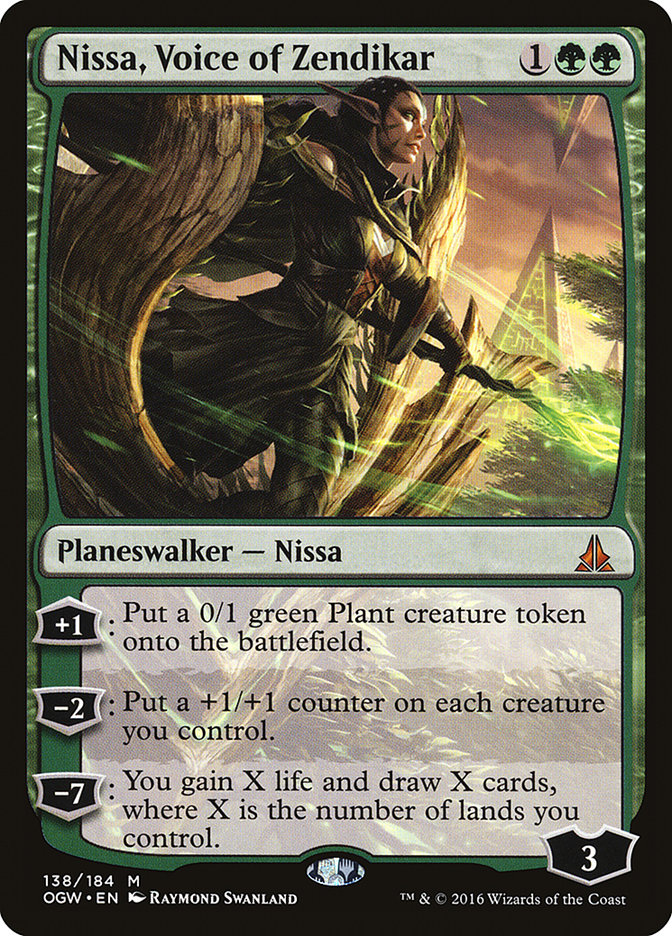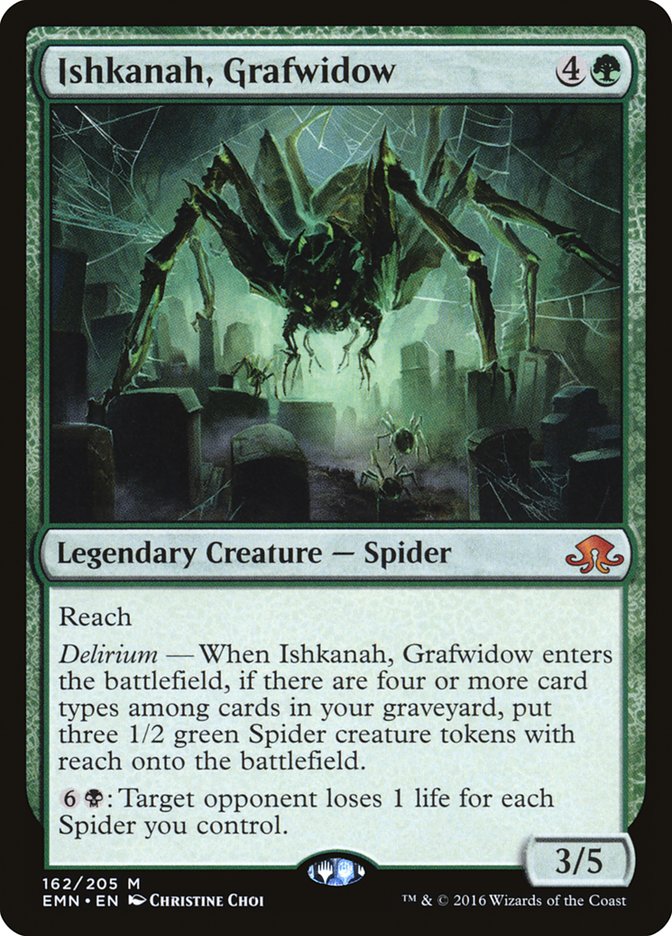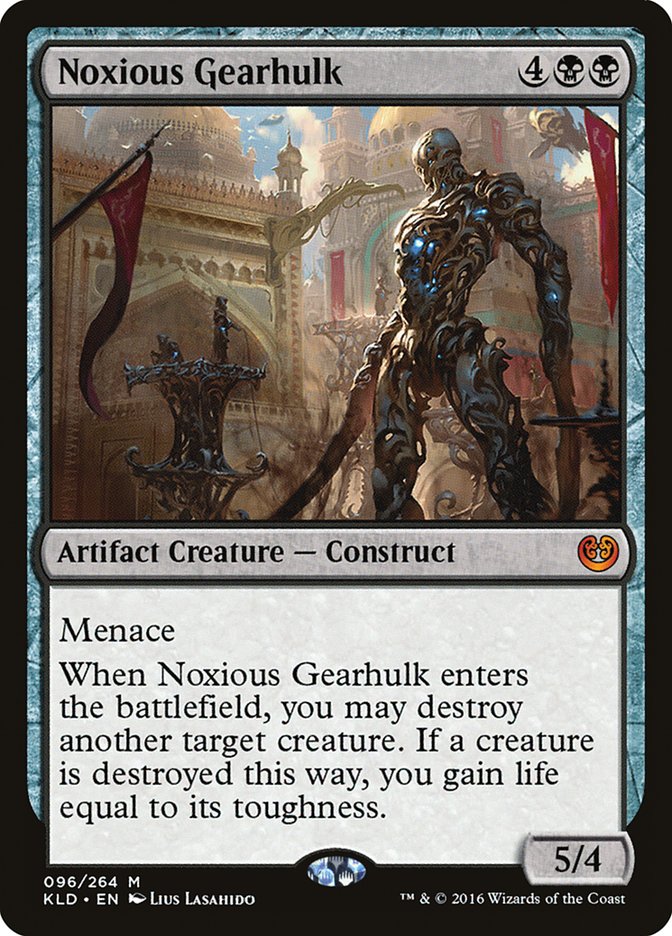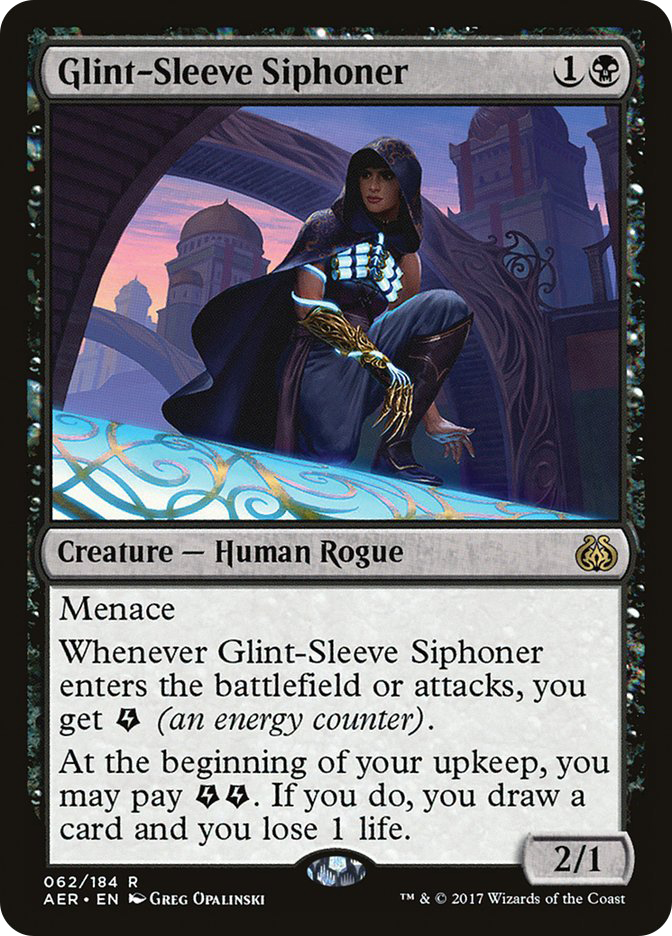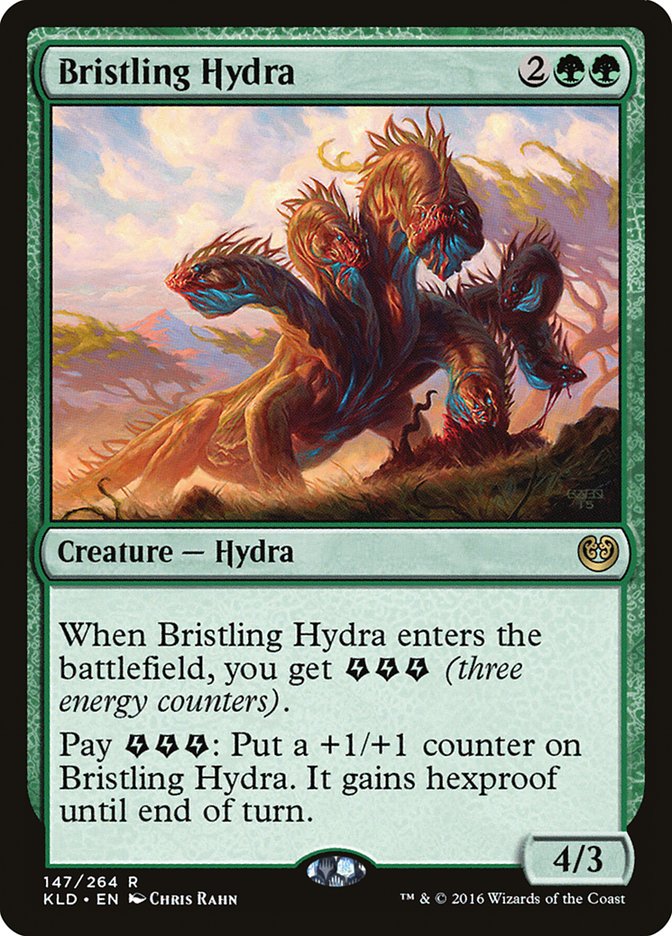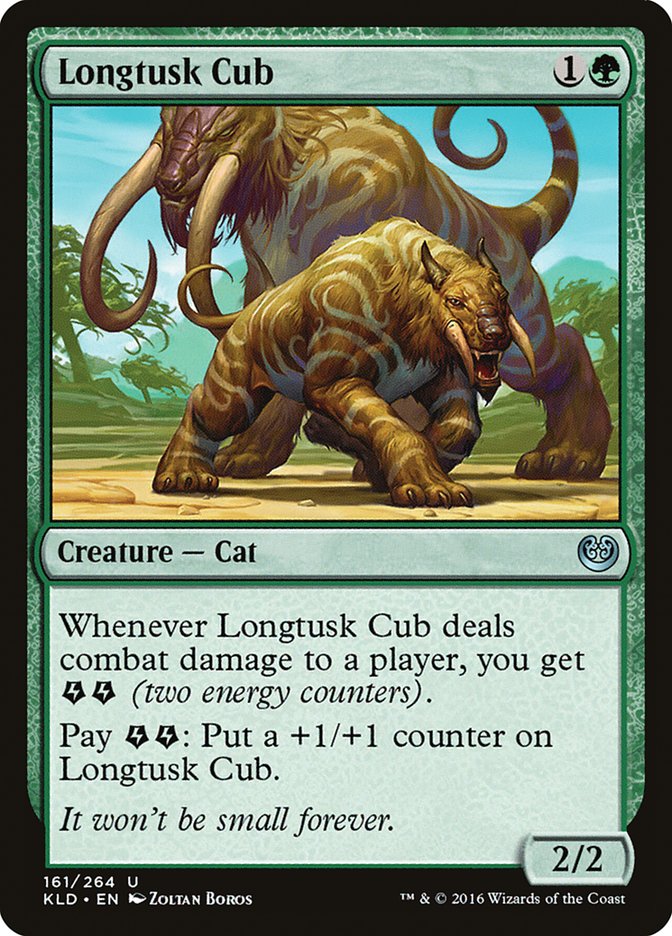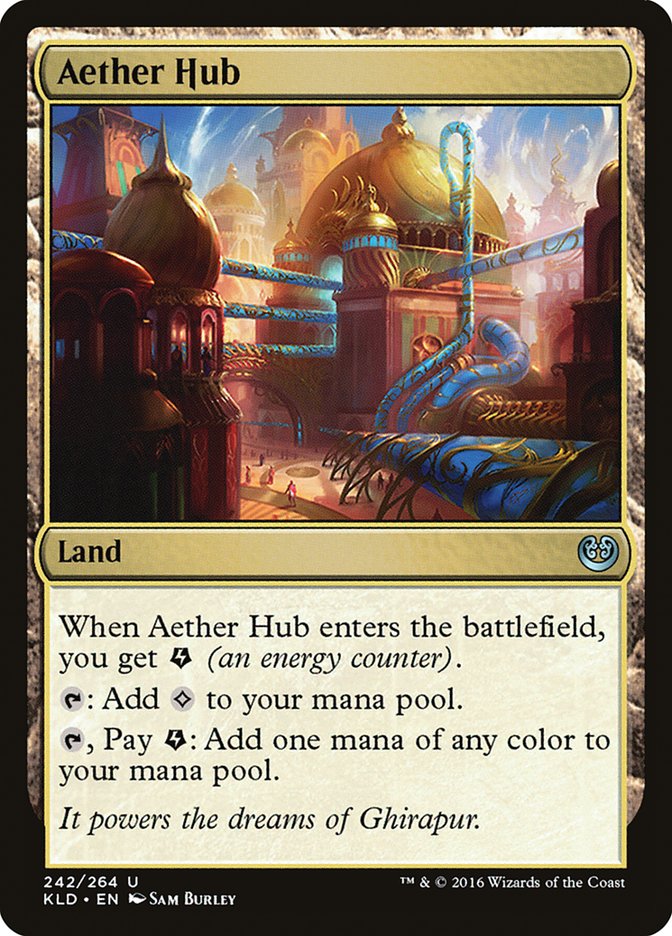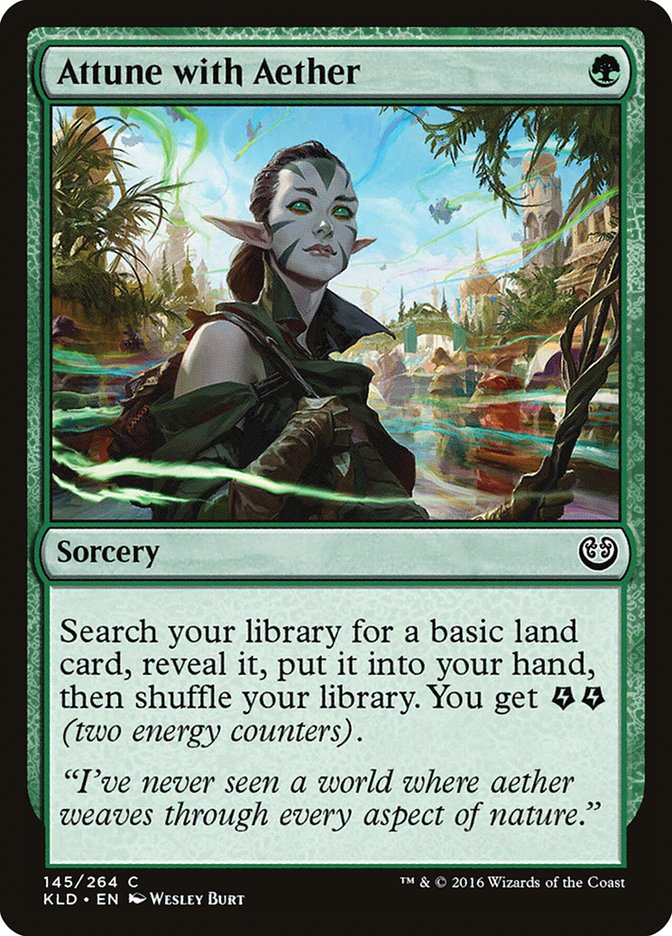Okay, I lied.
Quite the contrary, in fact. The deck is so good that I’m not even considering anything else for #SCGRICH. Despite narrowing it down to a single deck, this doesn’t even mean I’ve come close to finalizing my decklist. There are so many different directions to take the deck that it’s hard to figure out which one is best.
Part of grinding on the SCG Tour is being able to reasonably predict how the metagame will shift and what cards are going to wax and wane in popularity on a week-to-week basis. A good chunk of how this is done is understanding what parts of an archetype are relatively static and which parts can change. Sure, Winding Constrictor and Walking Ballista are the real deal, but what cards are going to fill in the cracks? Not every version is playing Nissa, Voice of Zendikar. Not everybody agrees that Glint-Sleeve Siphoner is the truth. There are people who aren’t even main decking Tireless Tracker!
A lot of lingo in Magic is used over and over to the point of people not wanting to feel stupid for asking what a common term may mean, despite being unsure of its meaning. For many people, this talk about “decks” versus “packages” begs the question, “What exactly are packages?”
Packages are subsets are cards in a deck that tend to work well with one another, but aren’t an integral part of the deck. The packages that people choose to put in their decks can dictate what other cards people put in their deck to enable synergies or strategies that they want utilize.
“Emma, aren’t you just describing a deck? I don’t see what the difference between a package and a primary strategy….”
No! A package is something that complements the rest of a deck! Think about the G/B Aggro deck, and what cards all of them play:
A majority of the G/B aggressive decks play these cards and figure out what other cards they’re playing from there. When discerning between a deck and a package, “the deck” is whatever the skeleton of the deck is. If any cards from “the deck” are removed, then it is generally considered to be a different archetype.
Think of “the deck” as the framework of a deck. It’s what will be highlighted when playing against the deck, what holds the deck up. Packages are the paint job or added features. You might not be buying a Volkswagen over a Honda because of the seat warmers, but let’s be honest; a warm butt has to count for a few percentage points, right?
Packages
Throughout coverage of Brennan DeCandio’s matches in #SCGCOL, Cedric Phillips and Patrick Sullivan would often allude to his “Traverse package.” This was in reference to Brennan DeCandio’s inclusion of Traverse the Ulvenwald in his deck, with slight compensation for his playing it:
Creatures (25)
- 4 Mindwrack Demon
- 2 Tireless Tracker
- 4 Grim Flayer
- 4 Verdurous Gearhulk
- 4 Winding Constrictor
- 3 Rishkar, Peema Renegade
- 4 Walking Ballista
Lands (23)
Spells (12)

Most of what Brennan is playing is the shell of G/B Aggro cards that people are quickly becoming accustomed to. He hardly compensated for the Traverses in his deck, and they still end up being powerful:
DeCandio doesn’t focus on fueling his graveyard; he just plays an honest game of Magic while incidentally putting cards in the graveyard. Outside of the pair of Evolving Wilds, it’s reasonable to assume that DeCandio would normally be playing all of these cards without Traverse the Ulvenwald in his deck.
It’s also not outside of the realm of possibility that this deck would have played a Foul Orchard or two for mana fixing (Grasp of Darkness is not an easy spell to cast on the second turn) and Evolving Wilds is just a slightly worse cards that has the much higher ceiling of enabling a Standard-legal Worldly Tutor on steroids.
DeCandio’s maindeck didn’t focus on the strengths of Traverse the Ulvenwald nearly as much as his sideboard did. This iteration of the maindeck featured multiple copies of all the creatures and lands, valuing consistency over flair. Post-sideboard, things change…
For matchups where it’s safer to tap out and DeCandio wants more haymakers, he can run singleton copies of haymakers and splashy effects. Playing a single Noxious Gearhulk sounds pretty unimpactful. That idea flips on its head when you consider that Traverse the Ulvenwald helps the deck play up to four of the card when it wants to draw it, but only a single copy when it doesn’t.
Traverse the Ulvenwald is by no means a back-breaking card on its own, but what it does do for the deck is an increase in power and consistency for everything else that the deck is doing.
While there isn’t much in the deck that relies on having delirium, the entirety of the deck is more powerful for having the interlocking synergies that come from having delirium enabled.
Identity
One quality that sets identifiable packages apart from sets of playable Magic cards is their ability to work together. Many cards in a package would be bordering unplayable (or point-blank embarrassing to register) without the rest of the package being present. Recognizing these kinds of cards is a key aspect of seeing the proverbial blueprint for a package or series of cards that make up said package.
Looking to the Standard Classic from #SCGCOL, we can see the same deck as DeCandio, with a different package:
Creatures (23)
- 4 Verdurous Gearhulk
- 3 Longtusk Cub
- 3 Bristling Hydra
- 4 Winding Constrictor
- 2 Rishkar, Peema Renegade
- 3 Glint-Sleeve Siphoner
- 4 Walking Ballista
Planeswalkers (4)
Lands (24)
Spells (9)

Daniel Guajardo took the synergy part of the deck to an entirely different level, eschewing the raw power of cards like Mindwrack Demon, Tireless Tracker, and Grim Flayer for an energy-based package. While being more fragile, the payoff of this approach is a much more explosive line of aggression and cards that are more powerful among themselves if the opponent isn’t interacting.
Some of these cards are perfectly justifiable on their own, and others are not. Can you tell which ones are the package concessions (read: cards that you’re playing to help the rest of the cards) from the cards that are the package incentives (cards that makes a player want to include the package)?
These cards are the rewards that Guajardo receives in exchange for playing the rest of the energy-based cards in his deck. Both Glint-Sleeve Siphoner and Bristling Hydra have great abilities that don’t take loads of work to activate…once. Most players would be unlikely to play either card if their abilities were one-time only. Part of the strength in both of these cards is that they can play off other cards and run away with a game when enabled by them.
Each of these cards is reasonably justifiable on its own. Longtusk Cub has seen play in other energy-based decks and doesn’t have the same ceiling as the two previously mentioned cards, but it works as both an enabler and an energy sink. Aether Hub is one of the more popular mana-fixing options to be printed in a few sets and plays well with the energy theme of the deck.
Attune with Aether does a lot of what Traverse the Ulvenwald does in the delirium-centric version of the G/B Aggro deck. Despite it not doing as much in the later stages of the game, Attune tends to do a lot more in the early-game. Outside of the whole “having copies of Lay of the Land in your deck lets you trim on the number of lands you play in your aggro deck” conversation, Attune with Aether is a card-neutral way to generate a resource that this deck wants to maintain a steady glut of throughout a game.
Without the other energy sinks being played in the deck, Traverse the Ulvenwald would almost assuredly be played over Attune with Aether (due to the ability of the card to do something more than Attune as the game progresses). This might seem like a bit of a gimme, but looking at cards in this context or with this mindset will help identify what cards are parts of a package and which cards are integral parts of an archetype.
Applying Theory In-Game
Past the point of deckbuilding, a good portion of what I’m talking about in this article can be used in tandem with what I talked about last week. Against other decks, these kinds of theme-based cards can stick out like a sore thumb while playing against a relatively known archetype, and you can use that to your advantage while you’re in the driver’s seat. If the opponent casts Attune with Aether and grabs a basic Swamp, it’s relatively easy to deduce that they’re likely playing a version of G/B Aggro that’s similar to Guajardo’s.
Your opponent may be playing a normal Jeskai control deck thus far, but it’s unlikely they’re playing something as cute as Oath of Chandra if they aren’t planning to abuse it with Felidar Guardian. If the Jeskai opponent is playing Felidar Guardian, they’re probably playing Saheeli Rai. Using a single card, it becomes easier to figure out to be more wary of a two-card combo from the opponent despite seeing neither of the cards, even if our opponent has been operating as a very different deck.
All of this information is pretty base-level stuff and is meant to build a foundation for recognizing trends in deck construction and navigating matchups with your opponent. Today’s packages may become tomorrow’s archetypes and vice versa. Finding out when something might not be anything more than a package can help you trim the fat in a relatively streamlined deck, or recognizing that something may be more integral to the deck than you initially considered could help you gain a better comprehension of the axis that a deck wants to fight on.
Next time you’re having trouble with a particular matchup, see if it’s possible to change a package you might be playing into something else that swings the matchup. Maybe you can sideboard an entirely different package (a la Traverse the Ulvenwald creatures) or remove a package that is weaker in a given matchup for some more archetype-centric cards.
The more you understand about deckbuilding, the more you’ll be able to customize the deck you already love into something that is even better than it was before. Packages and archetype-specific cards are the building blocks of decks. Rome wasn’t built in a day, and these kinds of fundamentals don’t solidify themselves overnight. Don’t just jam games with the same 75 cards for hours at a time. Change what you’re doing. Rethink why you’re doing things.
Never stop learning.
Never stop playing.
See you at #SCGRICH, and may the best G/B Aggro package guide me to the elimination rounds!


